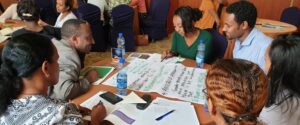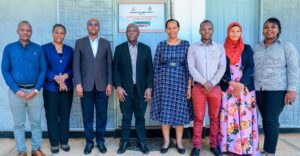Maximizing the return on investment: Making research matter
Rose Wilcher is the Director of Research Utilization at FHI 360 where she works to translate public health research findings into evidence-based policies and practices. She has extensive experience supporting the application and scale-up of underutilized and emerging evidence in reproductive health and HIV programs in developing countries. This was originally posted on July 30, 2014 on the FHI 360 blog, Degrees.
Earlier this month, the U.K. Department for International Development (DFID) released a report that seeks to answer a compelling question: Does research drive international development?
Through an extensive literature review, the authors examined the evidence supporting the commonly held assumption that investing in research leads to positive impacts on socioeconomic development. One of the specific pathways they explored is whether investment in research leads to development through more evidence-informed policy and practice. While the authors provide several examples of how research has led to policy and program improvements, they also conclude that “there are significant gaps in the capacity, incentives and systems necessary to ensure that research is systematically used in decision making.”
To put it more simply, research can be a powerful development tool if the results are used. Generating new evidence or finding a new solution is half the battle. Only when that solution is adopted in policy and practice can research lead to impact. But, the reality is that no matter how compelling a body of evidence or research finding may be, information does not put itself into practice. As a result, large gaps or long time lags too often exist between what we know and what we do.
Obstacles to putting research into practice
The barriers to getting research into practice are well documented. They include limited end-user involvement in research, weak attempts to communicate research findings and advocate for their use, and research designs that fail to consider the potential for scale-up. Other barriers noted by the DFID report include the inadequate capacity of decision makers to understand and use research evidence and the lack of incentives to drive research utilization. Short of a miracle occurring, overcoming these barriers requires deliberate, planned and sustained efforts over time.
How FHI 360 closes the research-to-practice gap
Since 2001, FHI 360 has staffed a Research Utilization unit dedicated to accelerating the application of evidence to policy and programs to improve outcomes. As a long-time member of this unit, I often describe us as neither the researchers nor the program implementers; rather, we are practitioners operating in the space in between, serving as a bridge between these two communities.
Our efforts to close the research-to-practice gap are organized into three main approaches:
- We improve the supply of evidence by ensuring that research design “begins with the end in mind,” responds to pressing policy and program needs and is communicated in ways that decision makers can understand.
- We enhance the demand for evidence by encouraging policymakers and program managers to seek out evidence as part of their decision-making processes and improve their capacity to effectively find, interpret and apply it.
- We facilitate the effective use of evidence within policy and program design, including supporting the scale-up of high-impact interventions and approaches.
On a day-to-day basis, we advocate for policy and program changes that reflect evidence of “what works,” synthesize and package evidence into programmatic tools and other user-friendly formats that support their use, engage key stakeholders and other champions in discussions on the application of evidence and provide decision makers with technical assistance to use research findings.
We aim to be evidence-based in our efforts, employing strategies that have been proven to improve the uptake of research in policy and practice. However, as the authors of the DFID report accurately note, “the pathways by which evidence informs policy and practice are often indirect and difficult to track.” Indeed, the development community would benefit from more research addressing the combinations of strategies that are most effective in increasing the demand for and use of evidence by policymakers and practitioners. In the meantime, we will continue to do our part to maximize the return on investment in research and ensure that the answer to the question, “Does research drive international development?” is a resounding yes.




